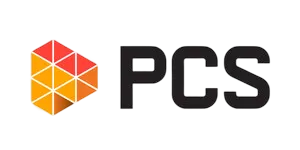AWS APPLICATION MODERNIZATION
What is Application Modernization?
Once the decision has been made by your organization to take advantage of Cloud technologies, you’ll want to ensure you receive the desired pay-off from the move. To achieve this, your team needs to understand how to make your applications work efficiently in the Cloud and plan accordingly.
You will not receive the full advantage any Cloud service has to offer if you move your applications to the Cloud and simply allow them to run the way you always have in the past. Doing so defeats the entire purpose of Cloud implementation.
To see significant ROI, you need to take advantage of the scalability Cloud services offer. Modernization means taking your application environment in the form that it’s in today (most likely, legacy and monolithic) and transforming it into something that is more agile, elastic, and highly available. In doing so, you will transform your business into a truly modern enterprise.
Some of the immediate advantages of application modernization are:
- Improved scalability
- Performance enhancements
- Security
- Reliability
Modernization Process Phases
Application modernization is going to be a continuous and incremental effort which involves:
- Making data-driven decisions to analyze legacy and Cloud workloads.
- Evaluating processes to move to the Cloud.
- Integrating new functionalities such as containers, serverless technologies, and modern databases to support emerging technologies such as artificial intelligence (AI), Internet of Things (IoT), and machine learning (ML).
Here at PCS, we recommend using the AWS devised 3 Phase approach to application modernization. These phases are:
Phase 1: Assess
The first phase in your modernization journey is to analyze the existing footprint of your applications. Here, you will revalidate your applications portfolio based on numerous factors such as:
- Is it a revenue-generating application (e.g. Ecommerce)?
- Is it a customer-facing application or operational support application?
- What technology/framework does it use, and what is the version?
- Is it a custom application or commercial off-the-shelf?
- What is the size of the application?
- Are there any compliance requirements or data classification requirements?
The comprehensive assessment of your applications will lead to a modernization blueprint where applications are grouped, ranked, and sequenced for modernization.
Phase 2: Modernize
Now since you have your blueprint ready, the execution of your implementation roadmap starts here. The end goal is to revitalize your applications by creating agile application architecture. Depending on your blueprint and strategic roadmap, this phase will involve various activities such as:
- Determine the milestones for your application group(s)
- Implement the infrastructure by using Cloud native approaches and framework such as:
- Lightweight containers
- Microservices
- Stateless and stateful services
- Self-service, elastic infrastructure
- Automation capabilities
- Target state data model design
- Reporting mechanism for value delivered (such as key business case metrics)
Phase 3: Manage
Now as our application portfolio starts to shift onto the Cloud one at a time, you need to start thinking about how you get can the highest ROI from your recent investment. Optimizing the runtime characteristics of an application is essential to successful modernization. The management phase includes all the elements of effective change management, program management, quality assurance, and service excellence.

